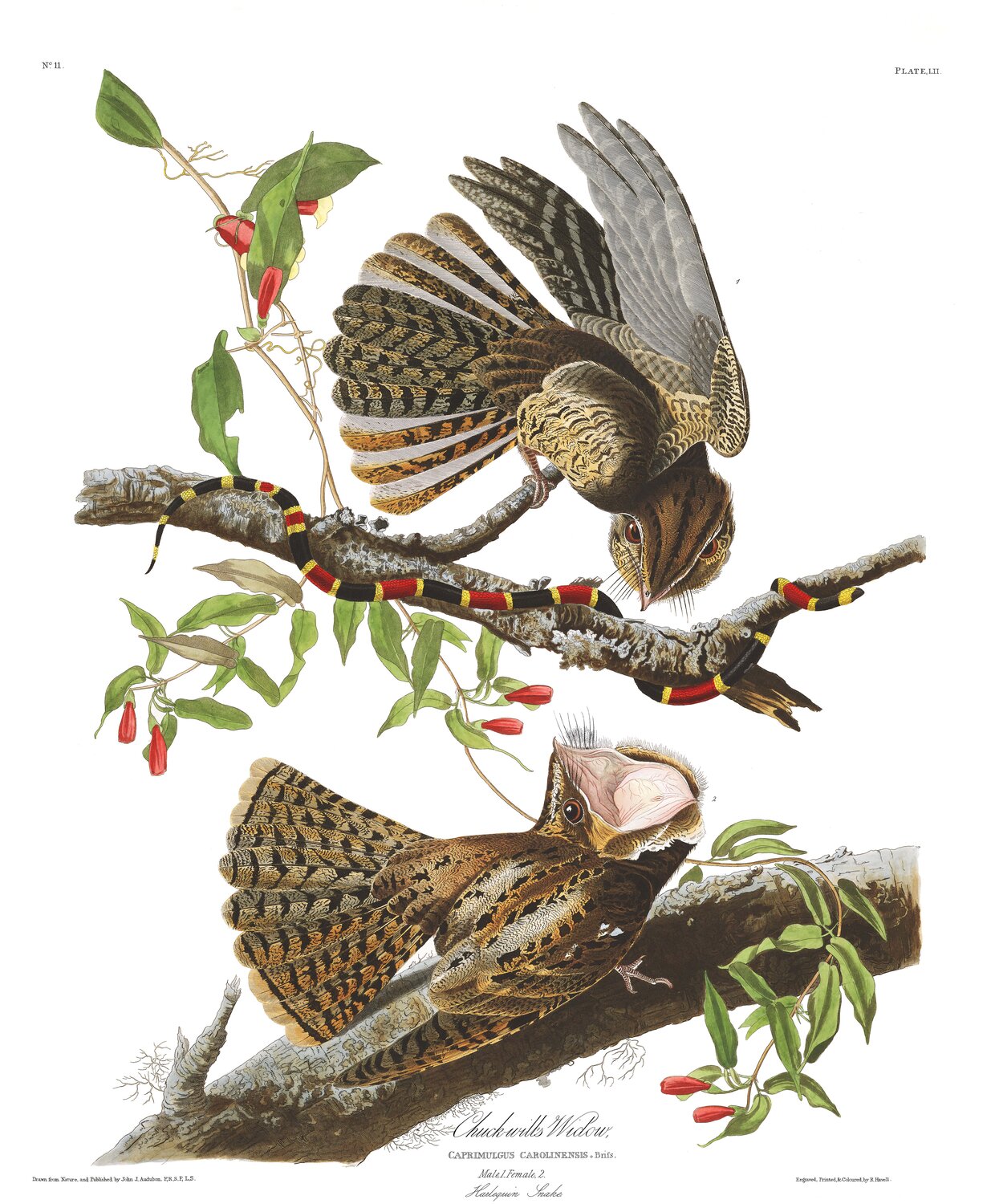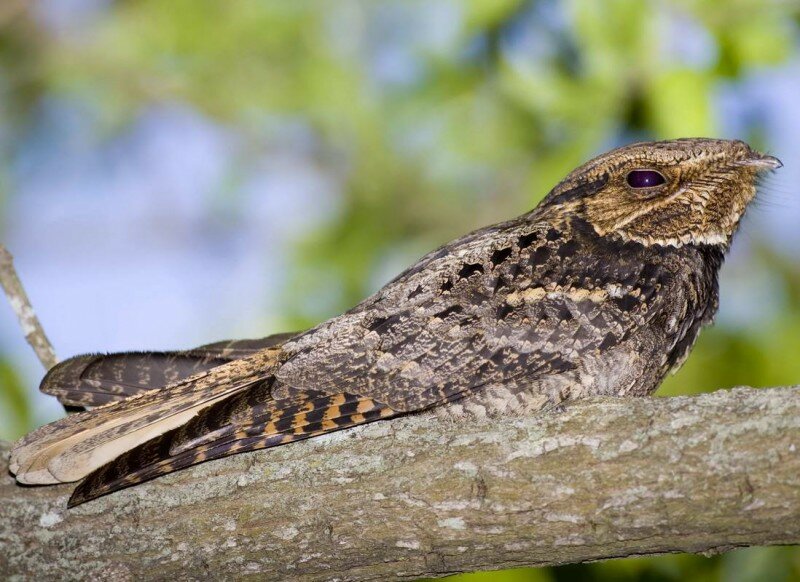Nightjars: Birds That Feed at Night – and Sing, Too
The border between Florida and Georgia rests in the middle of the St. Marys River, just north of Amelia Island. Being so close, I often follow the efforts of Georgia conservation groups. The June newsletter from Birds Georgia grabbed my attention. It is about emerging technology to better understand difficult-to-detect nocturnal avian species. Autonomous Recording Units (ARUs) are being deployed to supplement the fieldwork of ornithologists counting birds.
In the June newsletter, Birds Georgia described how it is using ARUs to detect nightjars around the state. Nightjars are birds that feed on insects at night. They are active at dawn, dusk and on bright moonlit nights. Chuck-will’s-widows, Eastern whip-poor-wills and common nighthawks are nightjars found in parts of Florida and Georgia.
According to the North American Breeding Bird Survey, Chuck-will’s-widow numbers have declined by 1.6% per year for a cumulative decline of about 58% between 1966 and 2019. Thus, Birds Georgia is supporting the efforts of the Nightjar Survey Network and recording these elusive birds utilizing ARU technology to collect recordings in the field. Habitat loss and use of pesticides are among the top reasons for decreasing numbers in North America.
“The Nightjar Survey Network was created to gain a better understanding of population status by implementing a standardized approach across the nation. This will help determine the magnitude and scale of population changes so a course for conservation may be plotted,” according to their website. Birds Georgia is one of many organizations around the nation participating in the survey. And, they are using ARUs to help supplement their work.
After reading about nightjars and national conservation efforts, I looked at the nightjar survey map. I found that Cumberland Island is the closest survey area to Amelia Island. There is also one survey area in Hilliard and one in the Guana-Tolomato Matanzas National Estuarine Research Reserve, just north of St. Augustine.
In May of this year, I was recording sounds in nature and managed to stumble upon a Chuck-will’s-widow singing at dusk. I was thrilled to capture the song of this nocturnal bird on the north end of Amelia Island. And the June newsletter from Birds Georgia prompted me to submit my recording to the Nightjar Survey Network.
For several years, I have used a field recorder to collect sounds in nature. It is more difficult than you might imagine to capture sounds in nature without any man-made noise. However, I enjoy the challenge.
The throaty song of Chuck-will’s-widow can be heard spring through summer throughout the Southeast United States. Some Chuck-will’s-widows will winter in Florida but most migrate further south into the West Indies, Mexico, and Central and South America.
The bird is seldom seen, as it is veiled with feathers that camouflage its location. Chuck-will’s-widow is about the size of a crow or robin with black, brown, tan and white feathers. Its tail is long and rounded with a square tip. These nightjars can be found in oak and pine woodlands and on the edge of swamps.
Courtship between male and female Chuck-will’s-widows involves a puffed-up male strutting up to a female. They nest on the ground protected by the forest's understory. Their eggs are white with brown and gray spots and incubate for three weeks. If the nest is disturbed, the female will move the eggs to a new location.
The female Chuck-will’s-widow raises the brood alone. She shelters them during the day and feeds them regurgitated insects caught at night. Young Chuck-will’s-widows will fledge in about 17 days according to Audubon’s website.
Another interesting bite of information about these nocturnal birds is when the opportunity presents itself, they will swallow a small bird, whole. However, most of their meals consist of beetles, moths, and other small insects. These birds also have unique stiff bristles around their beaks to help funnel food into their very wide mouths.
Andy McGlashen, Senior Editor at Audubon, writes that nightjars hunt by sight in low light and their “gaping cakeholes provide some extra room for error, like playing basketball with a hula hoop for a rim.”
Many Indigenous cultures considered these birds reverential and would never aim an arrow their way. Audubon himself describes Chuck-will’s-widow repeating song as one with “great clearness” and “brings to the mind a pleasure mingled with a certain degree of melancholy, which I have often found very soothing.” Others describe Chuck-will’s-widows song as a distress signal or the departing voice of the nearly dead.
You can decide for yourself if Chuck-will’s-widows’ song sounds soothing or not by listening to my field recording made on Amelia Island in May of 2024.
Tonight, just before bed, walk outside and listen for a nightjar. And, if the sound of the song is clear, record it with your phone and send it to the Nightjar Survey Network as evidence they are in our area.









